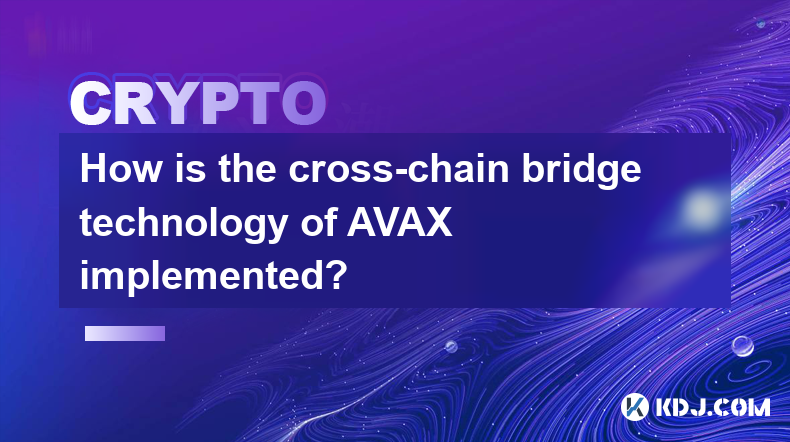-
 Bitcoin
Bitcoin $106,731.2224
-1.05% -
 Ethereum
Ethereum $2,444.9804
-1.20% -
 Tether USDt
Tether USDt $1.0003
0.01% -
 XRP
XRP $2.1882
0.09% -
 BNB
BNB $651.1435
-0.61% -
 Solana
Solana $148.3252
-2.09% -
 USDC
USDC $1.0000
0.01% -
 TRON
TRON $0.2787
0.55% -
 Dogecoin
Dogecoin $0.1598
-3.16% -
 Cardano
Cardano $0.5520
-2.43% -
 Hyperliquid
Hyperliquid $39.0960
-2.64% -
 Bitcoin Cash
Bitcoin Cash $516.9519
2.98% -
 Sui
Sui $2.7011
-2.95% -
 Chainlink
Chainlink $13.0582
-1.71% -
 UNUS SED LEO
UNUS SED LEO $8.9250
-2.53% -
 Stellar
Stellar $0.2359
-0.18% -
 Avalanche
Avalanche $17.3856
-3.73% -
 Toncoin
Toncoin $2.8095
-3.56% -
 Shiba Inu
Shiba Inu $0.0...01121
-1.95% -
 Litecoin
Litecoin $85.2795
-0.85% -
 Hedera
Hedera $0.1471
-2.15% -
 Monero
Monero $319.8004
1.12% -
 Dai
Dai $1.0001
0.01% -
 Ethena USDe
Ethena USDe $1.0001
0.02% -
 Bitget Token
Bitget Token $4.5344
-1.07% -
 Polkadot
Polkadot $3.3224
-2.96% -
 Uniswap
Uniswap $6.9697
-2.75% -
 Aave
Aave $266.1658
-2.25% -
 Pepe
Pepe $0.0...09414
-3.41% -
 Pi
Pi $0.4913
-3.29%
How is the cross-chain bridge technology of AVAX implemented?
Avalanche's cross-chain bridges, built on its Subnet architecture, use multiple consensus mechanisms and layered security (multi-signature validation, secure smart contracts) for efficient and secure token transfers between various blockchains, including Ethereum.
Mar 14, 2025 at 11:10 pm

Key Points:
- Avalanche's cross-chain bridge technology leverages its unique Subnets architecture.
- It utilizes a combination of different consensus mechanisms for security and efficiency.
- Bridge security relies on multiple layers of validation and verification.
- Several different bridge types exist, catering to varied needs and security requirements.
- Understanding the intricacies of Avalanche's Subnets is crucial to grasping its cross-chain capabilities.
How is the cross-chain bridge technology of AVAX implemented?
Avalanche's cross-chain bridge technology is a sophisticated system built upon its innovative Subnet architecture. Unlike many blockchain networks that rely on a single, monolithic chain, Avalanche allows for the creation of independent, customizable Subnets. These Subnets can utilize various consensus mechanisms, enabling flexibility and scalability. This architecture is fundamental to its cross-chain capabilities, allowing for secure and efficient communication between different blockchains, including Ethereum, Polygon, and others.
The core of Avalanche's cross-chain bridging lies in its ability to connect these independent Subnets. A bridge isn't a single piece of code, but rather a system of smart contracts and validators operating across multiple Subnets. These contracts facilitate the transfer of tokens and data between the connected networks. The specific implementation varies depending on the Subnets involved and the type of bridge used.
Different Types of Avalanche Bridges
Avalanche offers several types of bridges, each designed for specific use cases and security requirements. Understanding these differences is key to comprehending the overall system.
- Subnet-to-Subnet Bridges: These are bridges connecting two or more Subnets within the Avalanche ecosystem. They often leverage Avalanche's native consensus mechanisms for speed and security. The transfer of assets within the Avalanche ecosystem generally uses this method and is typically very fast.
- External Bridges: These are bridges connecting Avalanche Subnets to external blockchains like Ethereum. These bridges are more complex, requiring additional security measures to safeguard against vulnerabilities. They typically involve locking tokens on one chain and minting equivalent tokens on another, with the reverse process for withdrawals. This is where the complexity of cross-chain communication really comes into play.
Security Mechanisms in Avalanche Cross-Chain Bridges
Security is paramount in any cross-chain bridge. Avalanche employs multiple layers of security to protect against attacks and ensure the integrity of transactions. These layers include:
- Multi-signature validation: Transactions are often validated by multiple validators, requiring consensus before being finalized. This helps prevent malicious actors from manipulating the system.
- Secure smart contracts: The smart contracts governing the bridging process are rigorously audited and designed to withstand various attack vectors. Regular updates and security patches are crucial.
- Reputation systems: Some bridges incorporate reputation systems to monitor the behavior of validators, penalizing those engaging in malicious activities. This helps maintain the overall security of the network.
- Wrapped Tokens: The use of wrapped tokens, such as wrapped ETH (wETH) on Avalanche, further enhances security by isolating the risk of the original asset's blockchain.
The Role of Validators in Avalanche's Cross-Chain Functionality
Validators play a crucial role in the security and efficiency of Avalanche's cross-chain bridges. They are responsible for verifying and validating transactions across different Subnets. The selection and operation of validators are critical to the overall system's performance and resilience. The more validators participating, generally the more secure and robust the bridge becomes. This decentralized approach is a key strength of the Avalanche network.
The Avalanche Subnet Architecture
Understanding the Avalanche Subnet architecture is crucial to grasping how cross-chain bridges function. Subnets are essentially independent blockchains that can be customized to suit specific needs. This allows for the creation of specialized networks optimized for particular applications. The ability to easily create and connect Subnets is what allows for the seamless integration of various blockchains into the Avalanche ecosystem. This flexibility is a significant advantage over more monolithic blockchain designs.
Detailed Look at the Bridging Process (Example: Ethereum to Avalanche)
Let's imagine transferring ETH to the Avalanche network. The process typically involves the following steps:
- Locking ETH: You initiate the transfer by locking your ETH on an Ethereum-based bridge contract.
- Minting AVAX-Wrapped ETH (wETH): Upon confirmation on Ethereum, an equivalent amount of wETH (a token representing your ETH) is minted on the Avalanche subnet.
- Receiving wETH: You then receive the wETH in your Avalanche wallet.
- Redeeming wETH: To return your ETH to the Ethereum network, you would reverse the process, burning wETH on Avalanche and unlocking your original ETH on Ethereum.
Frequently Asked Questions:
Q: What are the transaction fees for using Avalanche's cross-chain bridges?
A: Transaction fees vary depending on network congestion and the specific bridge used. They generally include gas fees on both the source and destination chains.
Q: How secure are Avalanche's cross-chain bridges?
A: Avalanche employs multiple security mechanisms, including multi-signature validation and secure smart contracts, to protect against attacks. However, no system is perfectly secure, and risks remain.
Q: What are the limitations of Avalanche's cross-chain technology?
A: While highly efficient, the complexity of the system can introduce potential vulnerabilities. Scalability can also become a concern during periods of high network activity.
Q: What blockchains does Avalanche bridge to?
A: Avalanche bridges to several prominent blockchains, including Ethereum, Polygon, and others. The supported blockchains are constantly expanding.
Q: Is bridging on Avalanche faster than other solutions?
A: Generally, yes. Avalanche's Subnet architecture and efficient consensus mechanisms often result in faster transaction times compared to other cross-chain solutions. However, this can vary based on network conditions.
Disclaimer:info@kdj.com
The information provided is not trading advice. kdj.com does not assume any responsibility for any investments made based on the information provided in this article. Cryptocurrencies are highly volatile and it is highly recommended that you invest with caution after thorough research!
If you believe that the content used on this website infringes your copyright, please contact us immediately (info@kdj.com) and we will delete it promptly.
- Deutsche Bank's Bitcoin Custody Play: A New York Minute on Crypto Services
- 2025-07-01 22:30:12
- ZachXBT, Ripple, and RLUSD Adoption: A Deep Dive
- 2025-07-01 22:30:12
- Open XP Redemption on Optimism: Get Ready for OP Tokens on July 15!
- 2025-07-01 22:35:12
- Altcoins in June 2025: Data, Trends, and What's Next for Crypto
- 2025-07-01 21:30:12
- SUI Price Breakout Watch: Will 2025 Forecasts Hit the Mark?
- 2025-07-01 21:30:12
- BTCBULL: Riding Bitcoin's Bull Run to Crypto Glory
- 2025-07-01 20:30:11
Related knowledge

How to customize USDT TRC20 mining fees? Flexible adjustment tutorial
Jun 13,2025 at 01:42am
Understanding USDT TRC20 Mining FeesMining fees on the TRON (TRC20) network are essential for processing transactions. Unlike Bitcoin or Ethereum, where miners directly validate transactions, TRON uses a delegated proof-of-stake (DPoS) mechanism. However, users still need to pay bandwidth and energy fees, which are collectively referred to as 'mining fe...

USDT TRC20 transaction is stuck? Solution summary
Jun 14,2025 at 11:15pm
Understanding USDT TRC20 TransactionsWhen users mention that a USDT TRC20 transaction is stuck, they typically refer to a situation where the transfer of Tether (USDT) on the TRON blockchain has not been confirmed for an extended period. This issue may arise due to various reasons such as network congestion, insufficient transaction fees, or wallet-rela...

How to cancel USDT TRC20 unconfirmed transactions? Operation guide
Jun 13,2025 at 11:01pm
Understanding USDT TRC20 Unconfirmed TransactionsWhen dealing with USDT TRC20 transactions, it’s crucial to understand what an unconfirmed transaction means. An unconfirmed transaction is one that has been broadcasted to the blockchain network but hasn’t yet been included in a block. This typically occurs due to low transaction fees or network congestio...

How to check USDT TRC20 balance? Introduction to multiple query methods
Jun 21,2025 at 02:42am
Understanding USDT TRC20 and Its ImportanceUSDT (Tether) is one of the most widely used stablecoins in the cryptocurrency market. It exists on multiple blockchain networks, including TRC20, which operates on the Tron (TRX) network. Checking your USDT TRC20 balance accurately is crucial for users who hold or transact with this asset. Whether you're sendi...

What to do if USDT TRC20 transfers are congested? Speed up trading skills
Jun 13,2025 at 09:56am
Understanding USDT TRC20 Transfer CongestionWhen transferring USDT TRC20, users may occasionally experience delays or congestion. This typically occurs due to network overload on the TRON blockchain, which hosts the TRC20 version of Tether. Unlike the ERC20 variant (which runs on Ethereum), TRC20 transactions are generally faster and cheaper, but during...

The relationship between USDT TRC20 and TRON chain: technical background analysis
Jun 12,2025 at 01:28pm
What is USDT TRC20?USDT TRC20 refers to the Tether (USDT) token issued on the TRON blockchain using the TRC-20 standard. Unlike the more commonly known ERC-20 version of USDT (which runs on Ethereum), the TRC-20 variant leverages the TRON network's infrastructure for faster and cheaper transactions. The emergence of this version came as part of Tether’s...

How to customize USDT TRC20 mining fees? Flexible adjustment tutorial
Jun 13,2025 at 01:42am
Understanding USDT TRC20 Mining FeesMining fees on the TRON (TRC20) network are essential for processing transactions. Unlike Bitcoin or Ethereum, where miners directly validate transactions, TRON uses a delegated proof-of-stake (DPoS) mechanism. However, users still need to pay bandwidth and energy fees, which are collectively referred to as 'mining fe...

USDT TRC20 transaction is stuck? Solution summary
Jun 14,2025 at 11:15pm
Understanding USDT TRC20 TransactionsWhen users mention that a USDT TRC20 transaction is stuck, they typically refer to a situation where the transfer of Tether (USDT) on the TRON blockchain has not been confirmed for an extended period. This issue may arise due to various reasons such as network congestion, insufficient transaction fees, or wallet-rela...

How to cancel USDT TRC20 unconfirmed transactions? Operation guide
Jun 13,2025 at 11:01pm
Understanding USDT TRC20 Unconfirmed TransactionsWhen dealing with USDT TRC20 transactions, it’s crucial to understand what an unconfirmed transaction means. An unconfirmed transaction is one that has been broadcasted to the blockchain network but hasn’t yet been included in a block. This typically occurs due to low transaction fees or network congestio...

How to check USDT TRC20 balance? Introduction to multiple query methods
Jun 21,2025 at 02:42am
Understanding USDT TRC20 and Its ImportanceUSDT (Tether) is one of the most widely used stablecoins in the cryptocurrency market. It exists on multiple blockchain networks, including TRC20, which operates on the Tron (TRX) network. Checking your USDT TRC20 balance accurately is crucial for users who hold or transact with this asset. Whether you're sendi...

What to do if USDT TRC20 transfers are congested? Speed up trading skills
Jun 13,2025 at 09:56am
Understanding USDT TRC20 Transfer CongestionWhen transferring USDT TRC20, users may occasionally experience delays or congestion. This typically occurs due to network overload on the TRON blockchain, which hosts the TRC20 version of Tether. Unlike the ERC20 variant (which runs on Ethereum), TRC20 transactions are generally faster and cheaper, but during...

The relationship between USDT TRC20 and TRON chain: technical background analysis
Jun 12,2025 at 01:28pm
What is USDT TRC20?USDT TRC20 refers to the Tether (USDT) token issued on the TRON blockchain using the TRC-20 standard. Unlike the more commonly known ERC-20 version of USDT (which runs on Ethereum), the TRC-20 variant leverages the TRON network's infrastructure for faster and cheaper transactions. The emergence of this version came as part of Tether’s...
See all articles

























































































